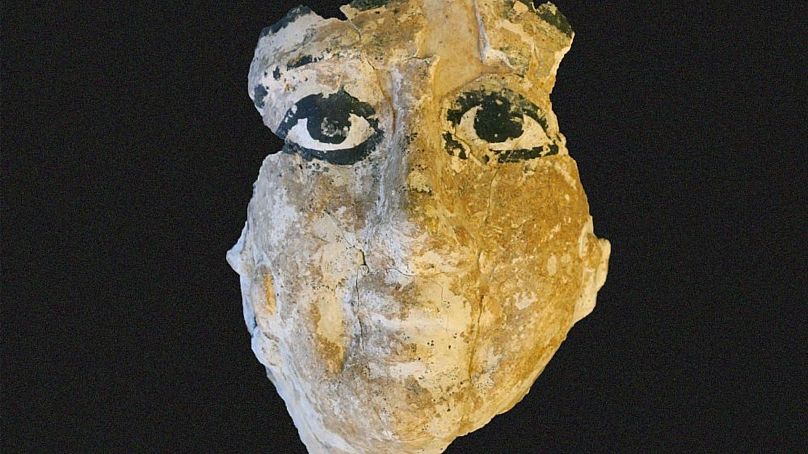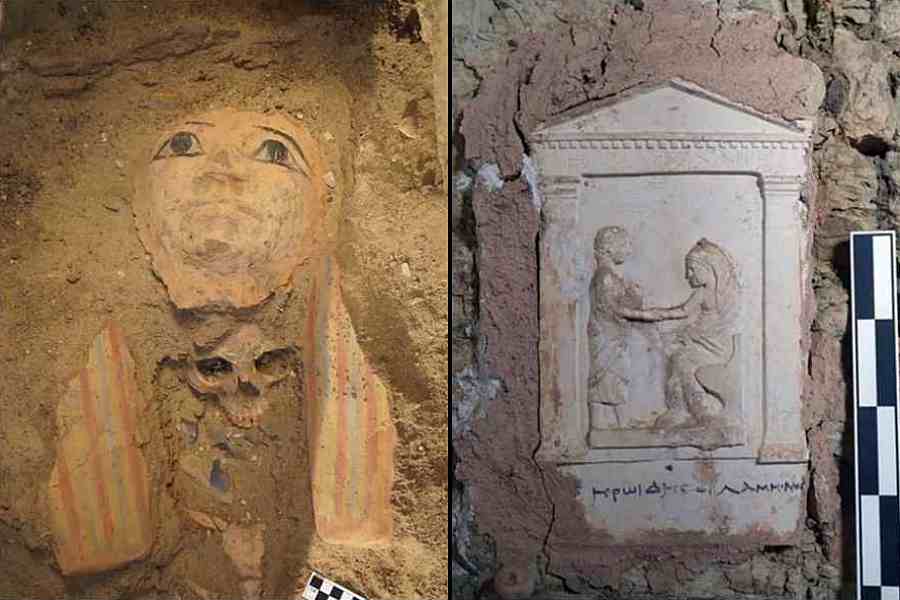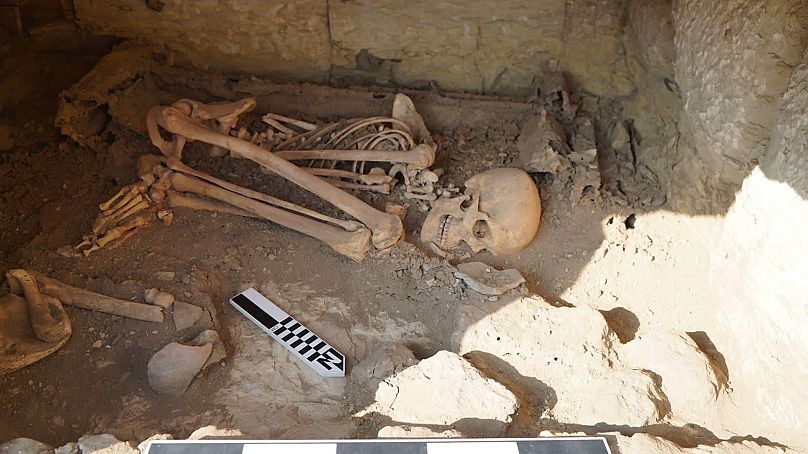Fri 19 January 2024:
In the necropolis of Saqqara, which is located about 20 miles south of Cairo, archaeologists have uncovered an ancient Egyptian tomb that was carved into the rock more than 4,000 years ago.
Thanks to joint efforts by Egyptian and Japanese researchers, the amazing discovery was recently confirmed by Egypt’s Ministry of Tourism and Antiquities.
Saqqara is a vast necropolis of the Egyptian capital Memphis. It’s a UNESCO World Heritage site and is home to more than a dozen pyramids, including the famous Giza Pyramids, as well as smaller pyramids at Abu Sir, Dahshur, and Abu Ruwaysh.
“Provides invaluable insights into the history of this region,” stated Nozomu Kawai, the leader of the Japanese team, of the tomb, which dates back to 2649 and 2150 BC and has several graves and artifacts from various historical periods.

The international team discovered the remains of a human buried alongside a vividly coloured mask, as well as a burial site for a small child dating back to the Second Dynasty (2890 – 2686 BC).
Inside the tomb, a coffin from the 18th Dynasty (1550-1295 BC) revealed a remarkably preserved alabaster vessel.
Additionally, two terracotta statues portraying the ancient Egyptian goddess Isis, initially associated with funerary practices, and the child deity Harpocrates, known as the god of silence and secrets during the Ptolemaic periods, were uncovered.
Further findings included a stela, a carved stone slab, bearing an inscription identifying it as belonging to a man named “Heroides”, various amulets and ostraca (pieces of broken pottery).
SOURCE: INDEPENDENT PRESS AND NEWS AGENCIES
______________________________________________________________
FOLLOW INDEPENDENT PRESS:
WhatsApp CHANNEL
https://whatsapp.com/channel/0029VaAtNxX8fewmiFmN7N22
![]()
TWITTER (CLICK HERE)
https://twitter.com/IpIndependent
FACEBOOK (CLICK HERE)
https://web.facebook.com/ipindependent
Think your friends would be interested? Share this story!






